This 100-Year-Old Silent Film Will Challenge Everything You Think You Know About Structure
'The Big Parade' is one of the first great anti-war films, but it's also a perfect demonstration of what I call 'narrative mirroring' in storytelling
If you’ve ever wondered if I choose the subjects I write about at 5AM StoryTalk to court subscribers, consider the fact that I’m about to spend the next several hours of my life writing about The Big Parade – a silent film, directed by King Vidor, that will turn 100 years old next year. As I’ve told you many times before, I only write about whatever I feel passionate about at any given moment, and right now I’m incredibly passionate about this anti-war film that became MGM’s biggest moneymaker until Gone with the Wind was released in 1939. The reason I think it’s worth your time to consider what I have to say about it is twofold: 1) the film has been beautifully restored and is available to watch for free on YouTube (link below) and, more importantly, 2) the structure Vidor and his team of writers* used, which predates Hollywood’s traditional, can teach you a lot about what I call narrative mirroring in storytelling. This technique will make sense to you as you read – and hopefully help you look at your own work in a different way – whether you’ve seen the film or not.
*Silent film credits worked very differently than screenwriting credits do today. For example, The Big Parade’s story is by Laurence Stallings, its scenario by Harry Behn, and its titles by Joseph W. Farnham.
Narrative mirroring involves repeating a story beat in a different context, an act of juxtaposition with the first that produces a new, deeper meaning (there might be another name for this, but I’ve never encountered it). This repeated beat also tends to imbue similarly new, deeper meaning in the original story beat if/when the viewer returns to it. This happens consistently throughout The Big Parade, as I’ll show.
This narrative trick can also be applied to an entire structure to accomplish similar on a much larger scale - as I’ll show with The Big Parade, too. It tends not to happen in cinema anymore, though, but only because so much of world cinema has adopted Hollywood’s three-act structure. The three-act structure naturally resists structural mirroring because this would require the film’s midpoint to be the hinge upon which the whole story turns. In Hollywood today, that key turning point is given to the Act 1 turn, about 25% of the way through a film. The reasoning for this is that audiences need to be hooked sooner rather than later or, like children with attention disorders, they’ll get bored and find something else to do. Of course, I can provide endless examples of contemporary films that demonstrate the fallacy of this, but I’m going to avoid going off on a tangent about that (for now).
What these strict rules typically do is result in films where audiences expect key moments to happen at X point and then either they do (somehow underwhelming because of the unconscious expectation), or they don’t (somehow disappointing because of the unconscious expectation). Consequently, a film like The Big Parade would be a jarring experience for many in the audience today…
…but that’s exactly why you should study its structure and try to understand the effect it produces on audiences whether they be people sitting in a movie/theater, in front of their TV home, or reading your brilliant new novel.
Here’s an overview of what to expect if you watch The Big Parade (1925) – and I do hope you take the time as it’s an extraordinary film. I watched it for the first time last month, and it shook me so much that I found myself nauseated at times by the battlefield action and brought to tears several times by its conclusion. If you’re going to watch it, maybe come back and continue reading after you do. Otherwise, I’m about to ruin a lot of the story for you.
The story kicks off in 1917 in a country drunk with commerce and industrial prosperity. America declares war against Germany, joining its allies in Europe in what we now refer to as the Great War or World War I. The rich and idle Jim, the disappointment of his family, gets caught up in the patriotic fervor (signaled by how he can’t help tapping his foot with the music) and enlists. He’s joined in boot camp by two other men he’ll form unexpected bonds with – Bronx bartender Bull and Southern construction worker Slim, both deeply working-class types who’ve never known a day of privilege in their lives. The trio are sent to bucolic Champillon, France, where their unit is temporarily billeted in a farmhouse owned by a bunch of wine-drinking, cheese-eating people who don’t speak English, this being France and all. Jim, who is engaged to a young woman back home, a young woman he’s never seemed to take too seriously, quickly turns his attention to the farmer’s bad-ass daughter – Melisande.
So do Bull and Slim and, presumably, others in the unit. Melisande spends a lot of her time slugging these grabby men who try to coerce her into sex. Not Jim, who genuinely falls for her. When the alarm roars, calling his unit to action, Melisande chases after him, burning tears in her eyes, desperate to say goodbye. He flings a necklace at her, to remember him with.
Jim’s truck joins a caravan of hundreds of trucks heading to the front, one long snaking procession of soldiers on their way to patriotic glory. This is the titular “big parade”, or at least one of two versions of it (more on this in a moment). This is also the film’s midpoint.
The second half of The Big Parade doesn’t spend a lot of time on anything other than how utterly terrible and merciless industrialized warfare is. As soon as Jim, Bull, and Slim reach the front, their unit is ordered to march into the woods where the enemy holds an established position. Things get grim at this point, and somehow the lack of sound outside of a score only makes it worse. Soldiers are picked off by snipers, falling silently around Jim and his friends as if picked off by the Grim Reaper himself.
When they finally clear the woods, a wide-open, beautiful field unfolds before them. That’s when the shells start dropping. The unit moves into the field, advancing on more of the enemy, as night falls. Before long, the world around them has been transformed into a kind of hell, the Earth disemboweled all around them. Corpses everywhere. We can only imagine the screams, but they are deafening.
Jim, Bull, and Slim are pinned down by enemy guns, and Slim sets out to take them out Ninja-style. Not being an actual ninja, he’s shot and killed. By this point, Jim loses his mind. With Bull trying to keep up, he charges the enemy like he’s Rambo and takes out the first position. Bull is killed. Then Jim is shot in the leg, but that doesn’t stop him. He crawls like a feral beast on his stomach, determined to kill more, until he winds up in a hole with a German he’s already critically wounded. He tries to impale this German with a bayonet…but can’t at these close quarters. The German looks too…human.
Finally, the cavalry arrives. Jim wakes in a hospital, his leg in a cast, and learns that Champillon has become a battlefield. He sneaks out and catches a ride, desperate to find Melisande. Instead, he finds Champillon in ruins. Melisande is gone. He’s rescued by an ambulance and joins another long caravan of trucks, this one carrying the wounded and dead – the other kind of “big parade” found in this film. From here, we jump to the war’s conclusion. Jim returns home, unsure if his love survived the war. His family welcomes him – which is when we discover his broken leg was ultimately amputated (how they pulled off this effect, I can’t begin to guess). But Jim can’t get Melisande out of his mind, and so he returns to France, a shell of the man he used to be, destroyed by industrialized warfare, and is reunited with her on a farm where she is working the land.
Let’s start with a sampling of the story beats that are repeated, echoed, mirrored (reflections always show up in reverse, remember) in order to create deeper meaning. I’m not going to list them all, but I feel these will illustrate my point for you.
The film begins in an industrialized world disconnected from nature; it ends in an agrarian world where people live directly off the land.
The film is bookended by two parades. The first is a recruitment parade after America declares war on Germany, symbolizing patriotism and romantic, adventurous ideas about war. The second is a parade of ambulances carrying the maimed and killed away from the front, symbolizing the cost of all that patriotism and propaganda. Note: the film features a third parade, already referenced earlier; this one is the film’s midpoint and sees Jim’s unit going to fight at the front (I consider it a hinge scene, as it turns the first half of the film into the other).
While attending the recruitment parade, Jim unconsciously begins tapping his left foot to patriotic music (he enlists as a result of this); at the end of the film, he returns home with his left leg amputated, the cost of that patriotism.
Jim’s father expresses his detest for his son’s idleness (Jim is the “bad” son here), clearly favoring Jim’s hard-working “good” brother who is employed at their father’s factory; at the end of the film, Jim returns to find that his brother has stolen his fiancée, reversing the moral balance between the two.
Jim embraces his fiancée, a city girl, at the start of the film; he ends up in the arms of a country girl at the close of it.
Jim and his unit are billeted in Champillon, France, which is a postcard-worthy country town; when he returns to the town to find Melisande, he discovers it’s been turned to burning ruins by industrialized warfare.
The structure of Big Parade, like many early films, is a bit unconventional by any standard. It’s not five acts, that’s for sure. It’s not three acts as Aristotle imagined them and was equally popular on stages in the early 20th century just as it continues to be today. Of course, it’s entirely possible to look at it and shoehorn it into either of these act breakdowns. You could make it six or seven acts, too. I see screenwriting gurus constantly coming up with new modes as if they’re going to reinvent the wheel here. But I think Big Parade works so well because it does its own thing, and its “own thing” means a four-act structure.
Here it is:
Act 1: The call to adventure.
Jim and his friends enlist out of some sort of romantic patriotic duty. War is like super-exciting, so bring it on!
Act 2: Fun and games.
In this case, call this “the myth of war” because it turns out going off to war really is sexy and cool, full of hot French women and drunkenness and camaraderie. A beautiful foreign setting, love, and wine – vive la France, assholes!
The midpoint is the hinge in this neatly divided film. The Big Parade carries Jim and his friends off to the front.
Act 3: Conflict.
Reality hits Jim in the face like a grenade. Death, destruction, even the Earth cannot resist the force of industrialized warfare. Run away, run away, fuuuuuuuuuuuck!
Act 4:
The hero returns changed. Jim reaches Champillon, where he sees the myth of war in ruins. All that remains is horror and scars that will never go away. His only chance for happiness is to return to the natural world and the woman he fell in love with there. Farm life, baby.
There is obviously a lot here that sounds like Joseph Campbell’s hero’s journey. The Big Parade precedes this theory, but two things regarding that. The first, the hero’s journey was a defining characteristic of much of the education in the classics that director King Vidor and others in the late 19th century would’ve received; and the second, I’m the one explaining this, so we have to account for how I perceive things based on my own education, which includes Campbell.
The important thing to study here is how each act in the front half is mirrored in the second half by an act that reverses it as part of Vidor’s anti-war tale. The call to adventure is juxtaposed with a violent return that is a rebuke of it; the myth of war collides with the violent reality of it.
What I’d like you to take away from this exercise – besides inspiration to dive into The Big Parade yourself (you won’t regret it!) – is a clearer sense of the narrative power of structural juxtapositions such as the ones I’ve described here. Maybe you never blow up traditional act structures as King Vidor did, but it’s worth considering how scenes, language, even visual elements can be echoed and/or reversed across your screenplay or even novel manuscript to create deeper meaning for your audiences. These layers can transform a shallow read or cinematic experience into one so moving that you’re unable to stop yourself from writing a lengthy Substack essay about it…like this one.
If this article added anything to your life but you’re not up for a paid subscription, consider buying me a “coffee” so I can keep as much of this newsletter free as possible for the dreamers who couldn’t afford it otherwise.
If you enjoyed this particular article, these other three might also prove of interest to you:




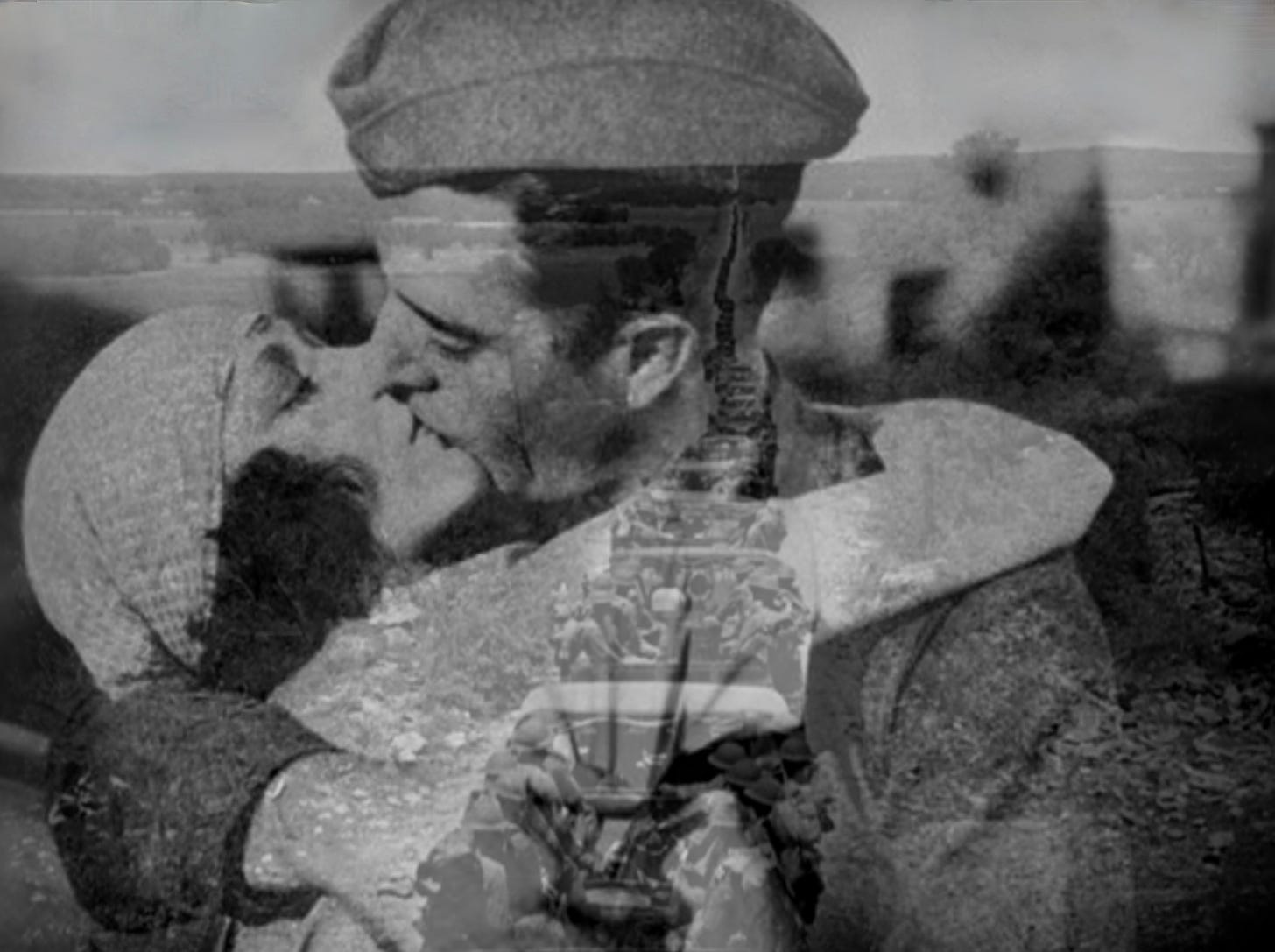
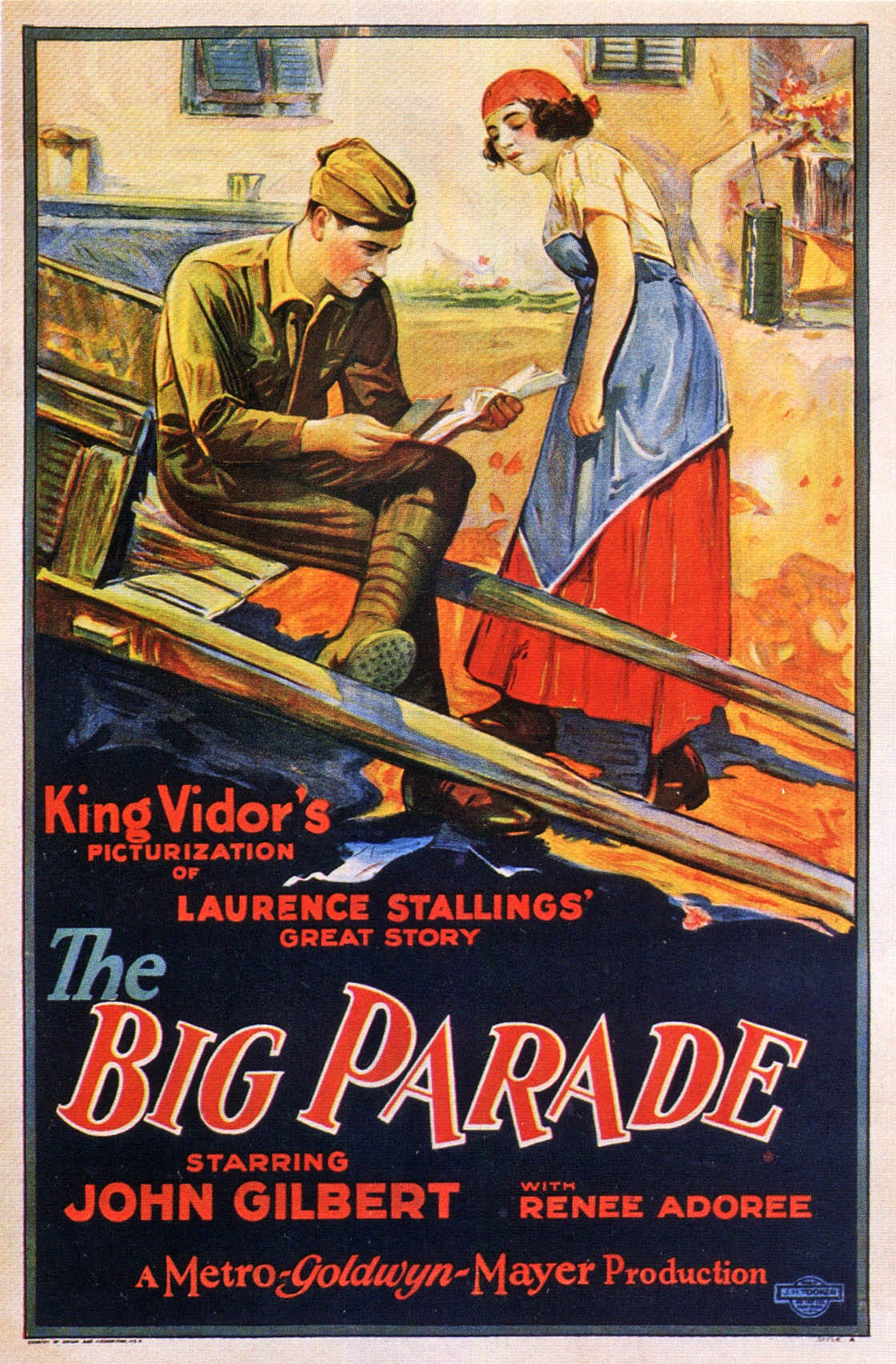
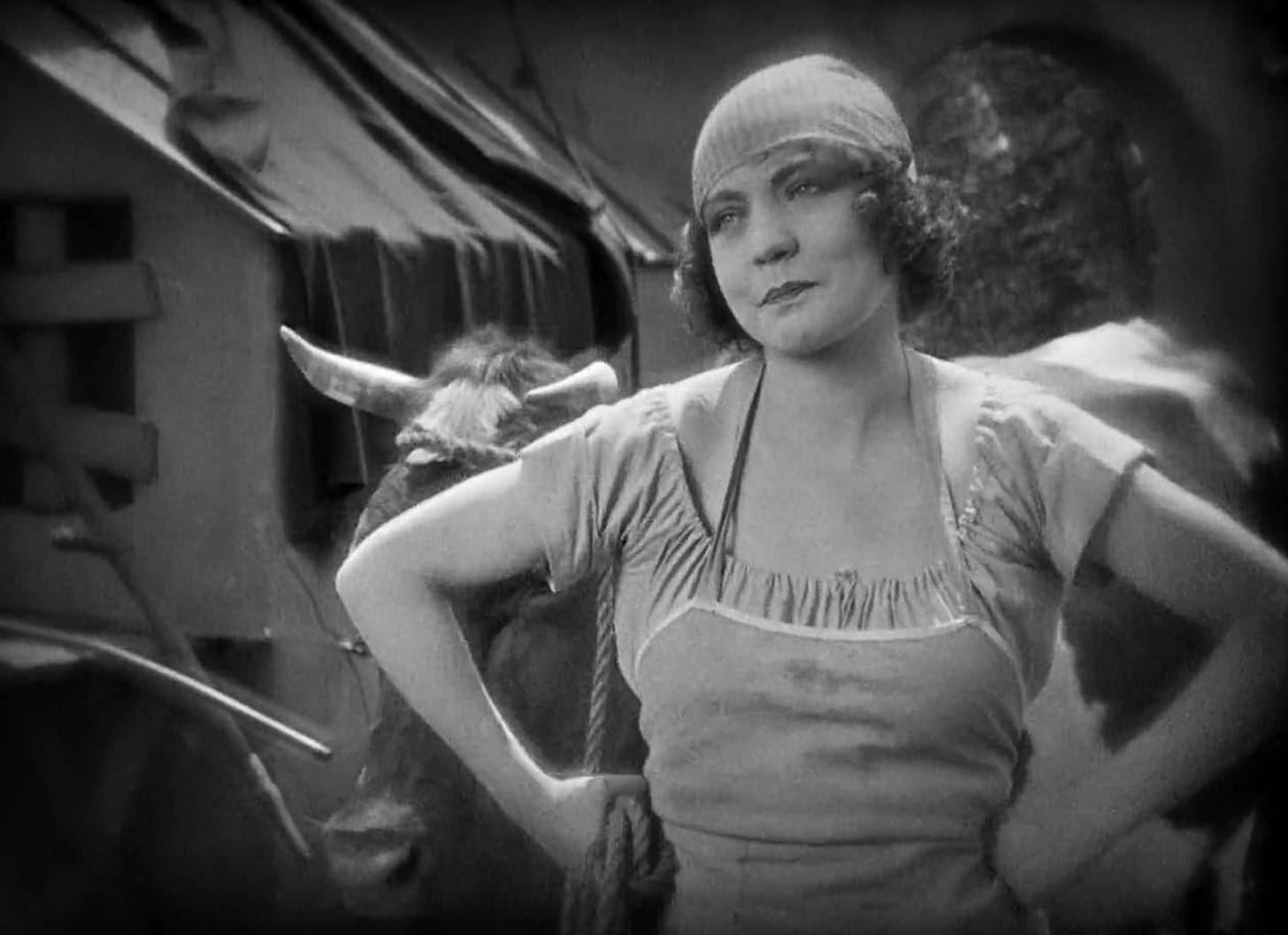
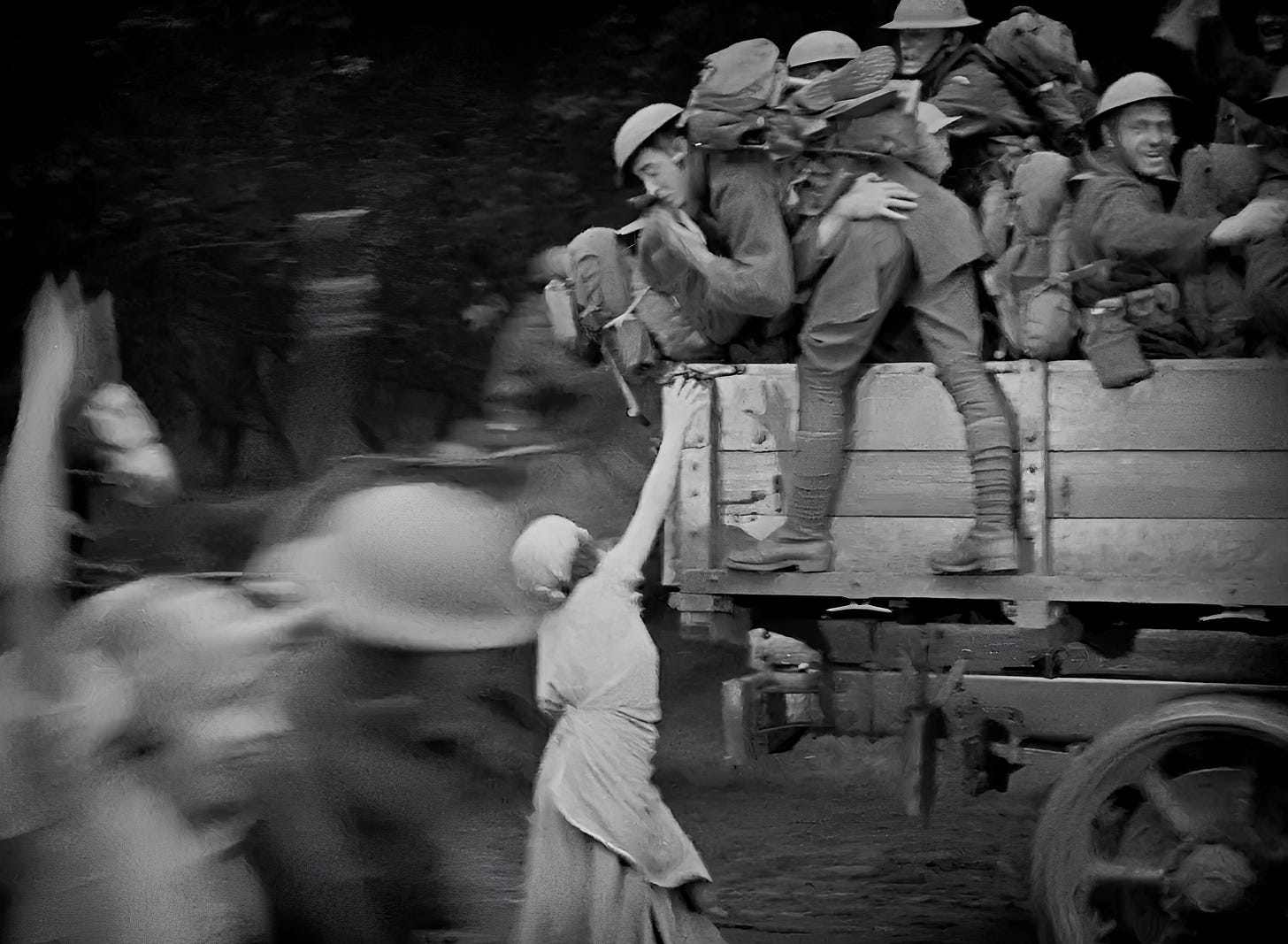
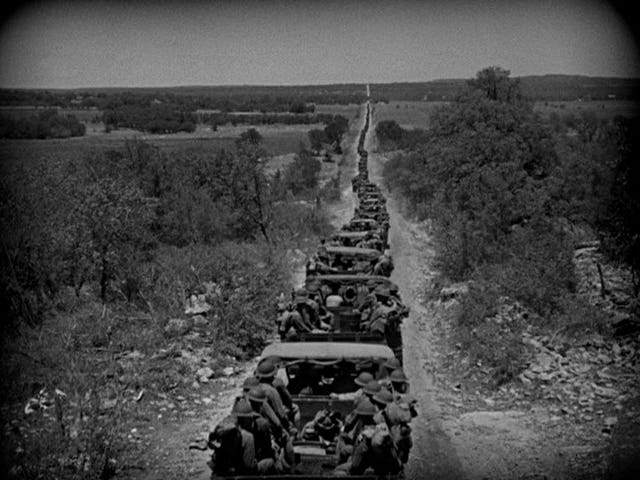
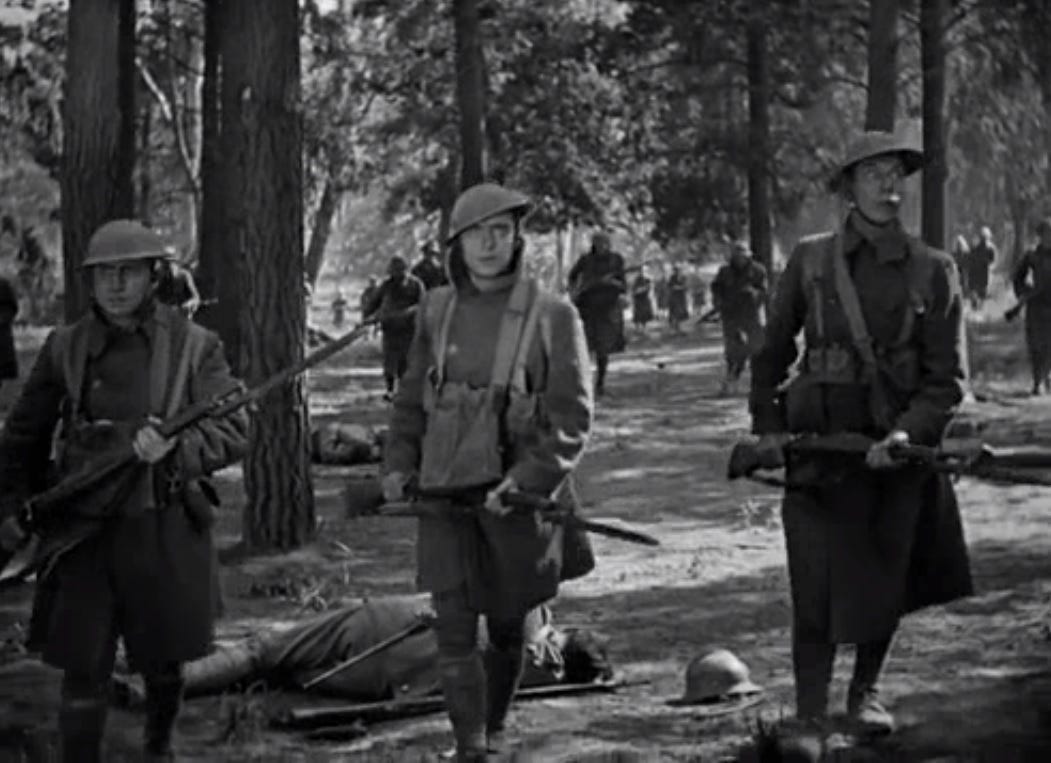
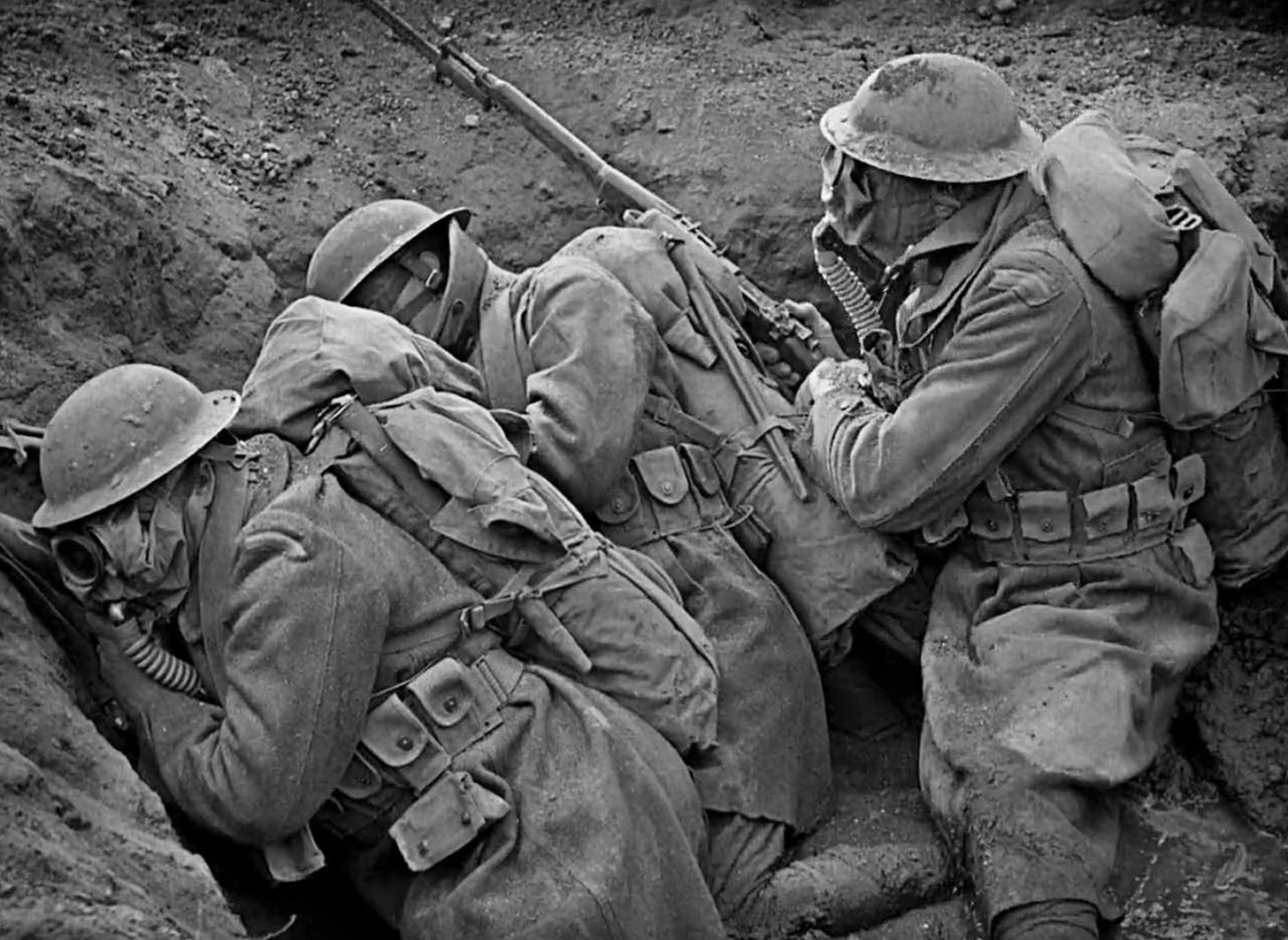
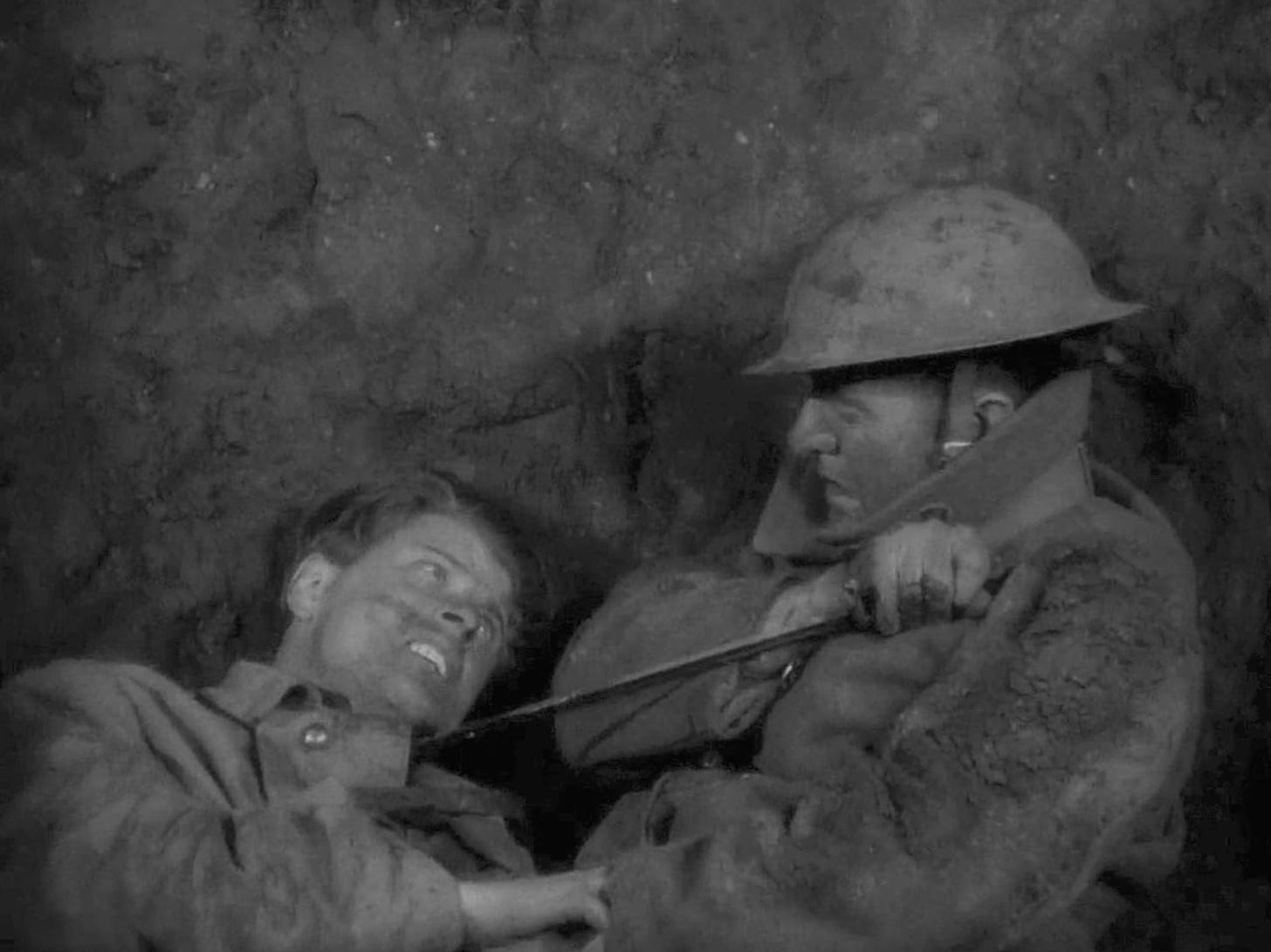
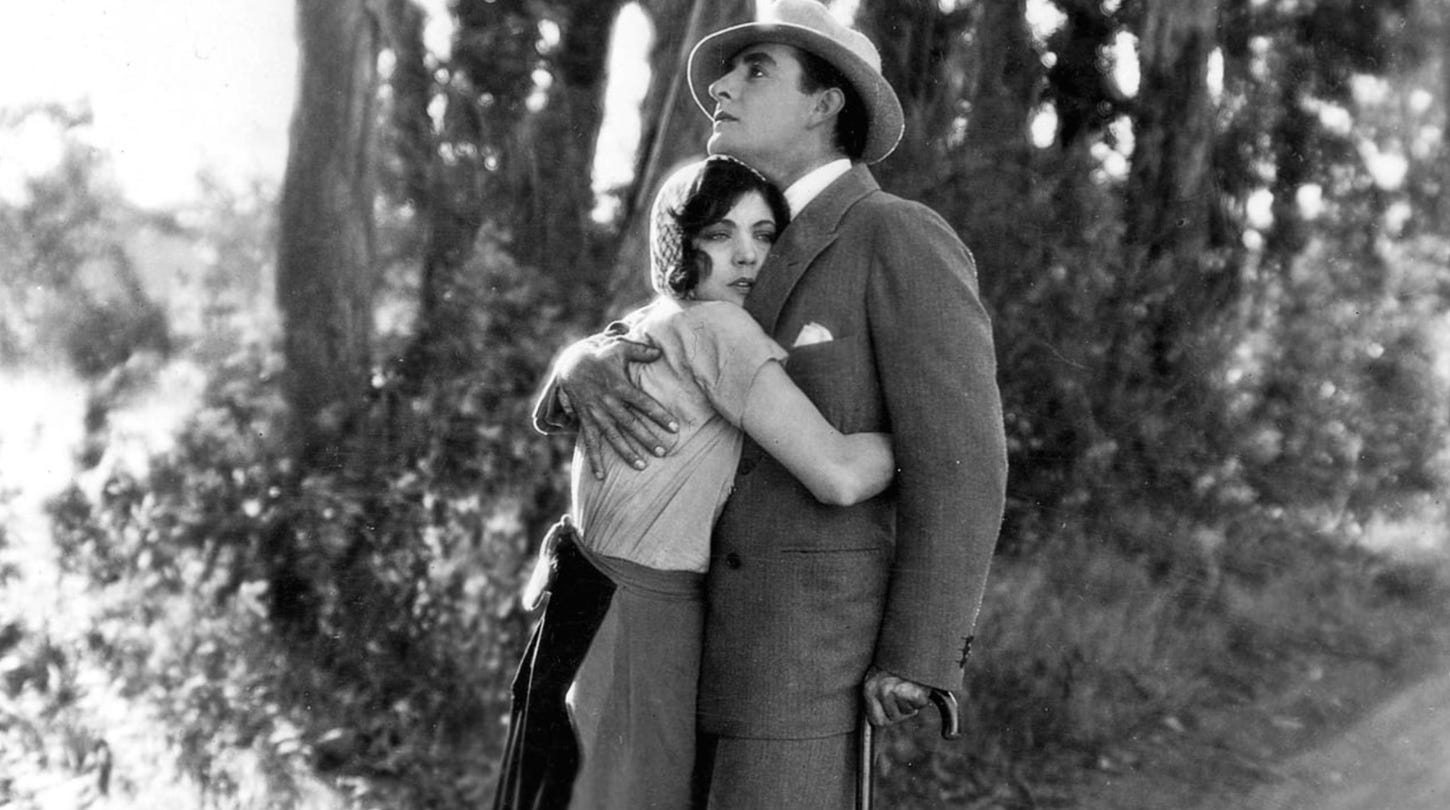
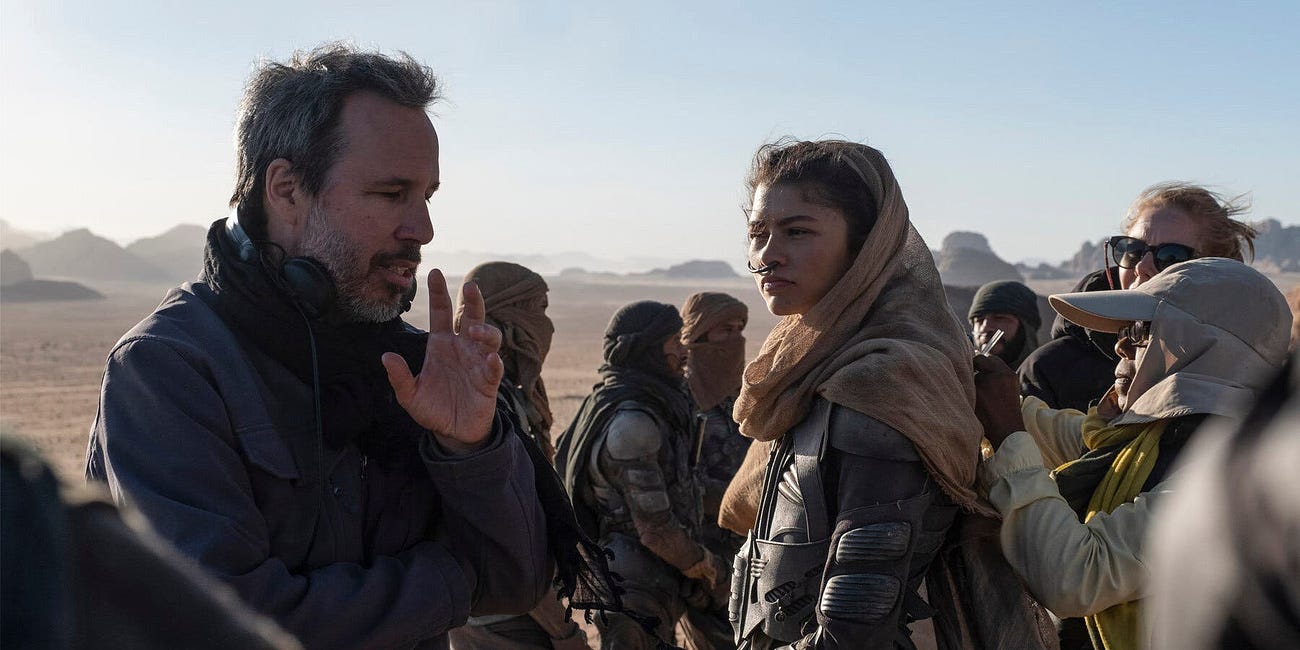
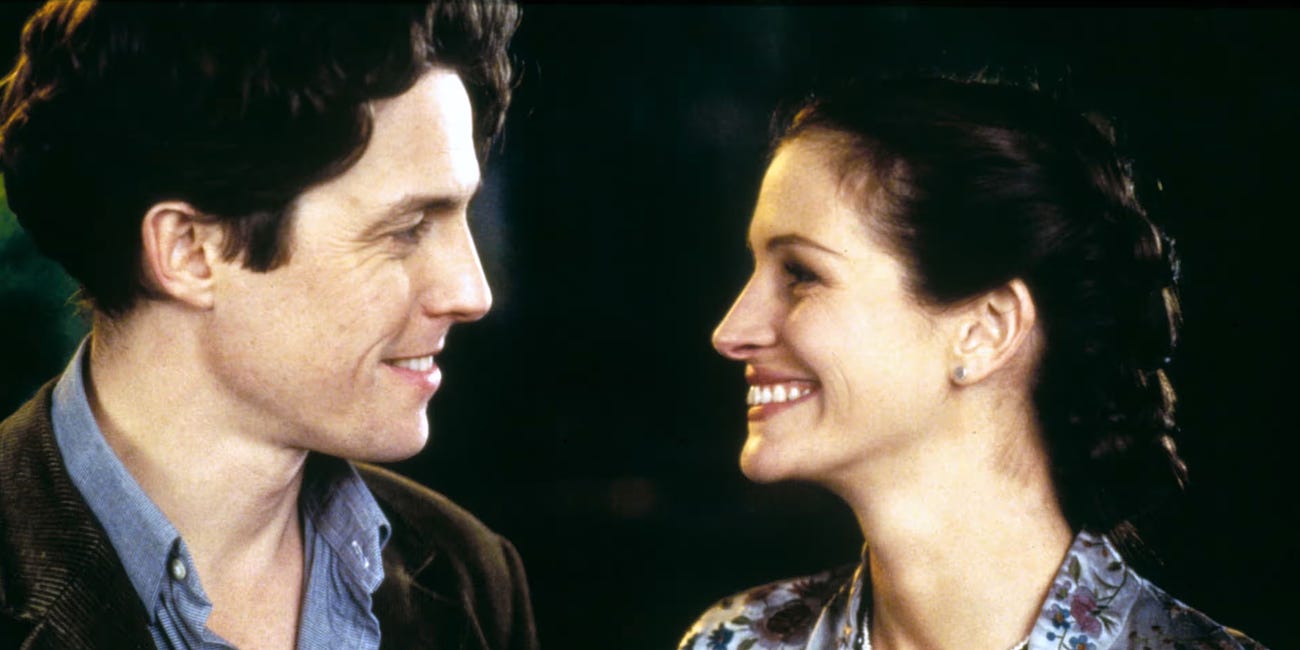
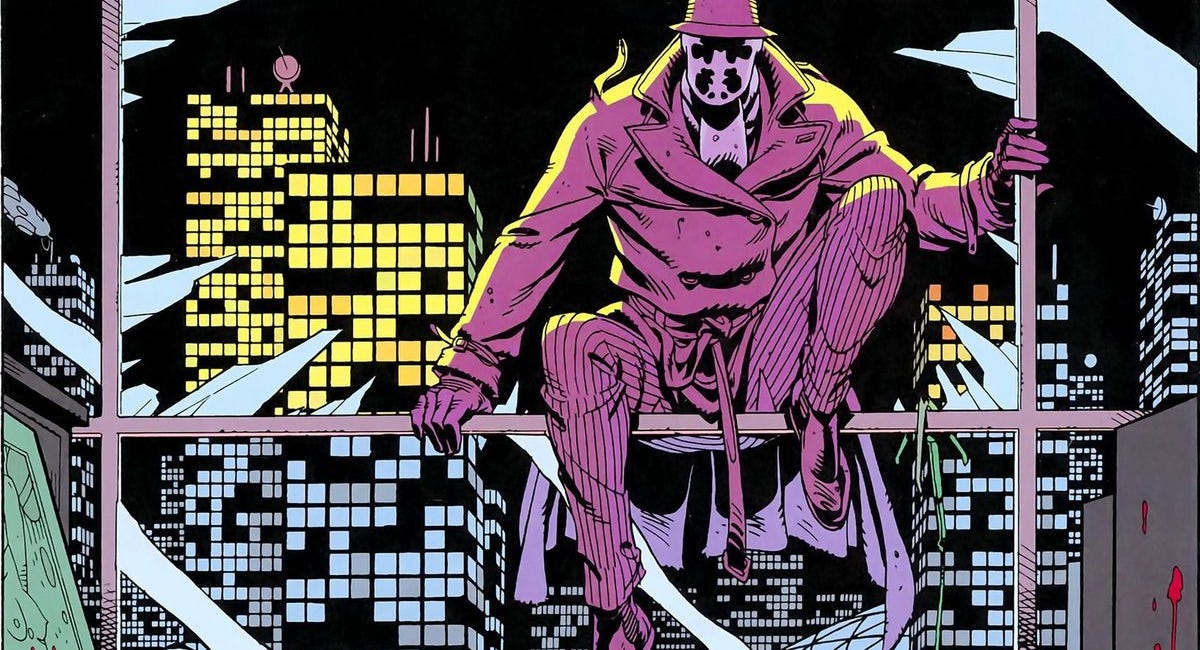
Many silent filmmakers couldn't adapt to sound technology, but Vidor did. He's one of the few directors to have created significant films in both formats.
Know this picture very, very well. The reality is that its enormous commercial success at the time was due to the spectacular romantic chemistry between Gilbert and Rene Adoree, surpassing even his chemistry with Garbo. Gilbert and Adoree also had a huge hit in The Show by Tod Browning.